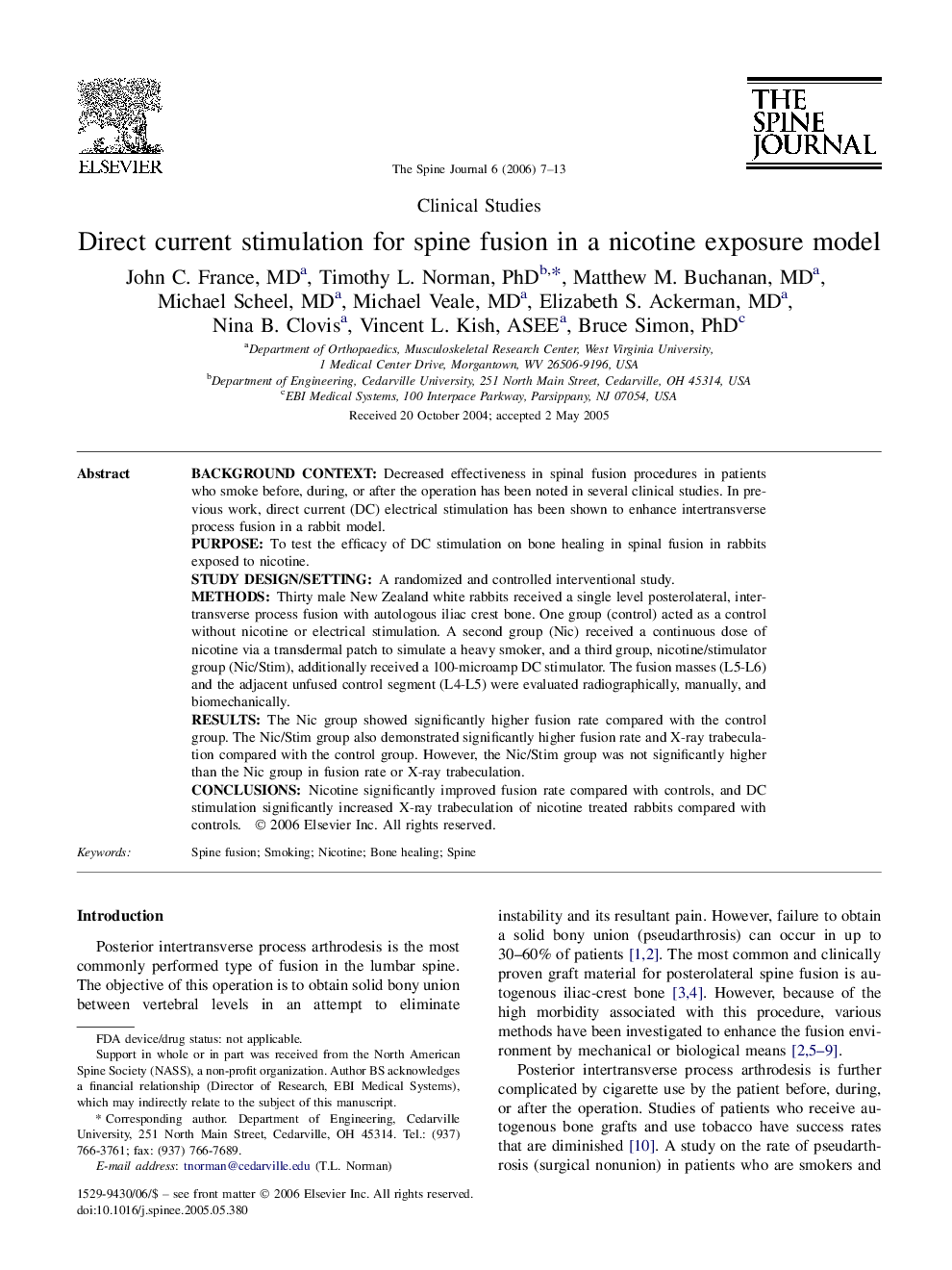| Article ID | Journal | Published Year | Pages | File Type |
|---|---|---|---|---|
| 4100473 | The Spine Journal | 2006 | 7 Pages |
Background contextDecreased effectiveness in spinal fusion procedures in patients who smoke before, during, or after the operation has been noted in several clinical studies. In previous work, direct current (DC) electrical stimulation has been shown to enhance intertransverse process fusion in a rabbit model.PurposeTo test the efficacy of DC stimulation on bone healing in spinal fusion in rabbits exposed to nicotine.Study design/settingA randomized and controlled interventional study.MethodsThirty male New Zealand white rabbits received a single level posterolateral, intertransverse process fusion with autologous iliac crest bone. One group (control) acted as a control without nicotine or electrical stimulation. A second group (Nic) received a continuous dose of nicotine via a transdermal patch to simulate a heavy smoker, and a third group, nicotine/stimulator group (Nic/Stim), additionally received a 100-microamp DC stimulator. The fusion masses (L5-L6) and the adjacent unfused control segment (L4-L5) were evaluated radiographically, manually, and biomechanically.ResultsThe Nic group showed significantly higher fusion rate compared with the control group. The Nic/Stim group also demonstrated significantly higher fusion rate and X-ray trabeculation compared with the control group. However, the Nic/Stim group was not significantly higher than the Nic group in fusion rate or X-ray trabeculation.ConclusionsNicotine significantly improved fusion rate compared with controls, and DC stimulation significantly increased X-ray trabeculation of nicotine treated rabbits compared with controls.
